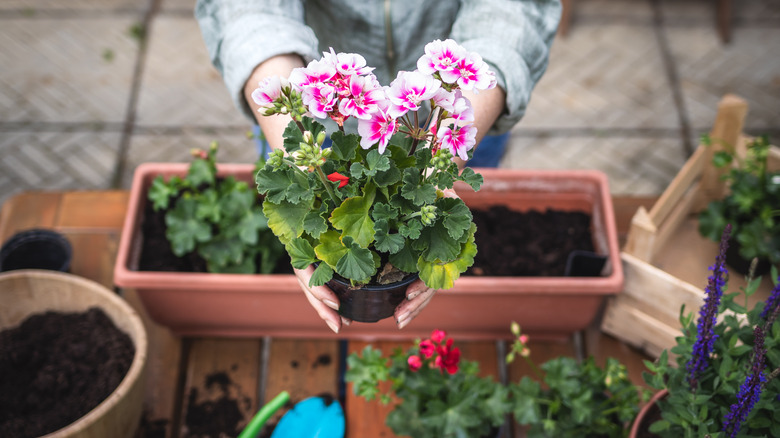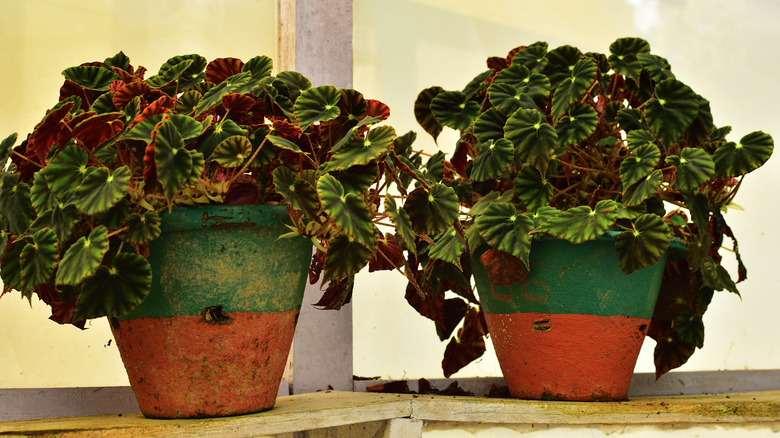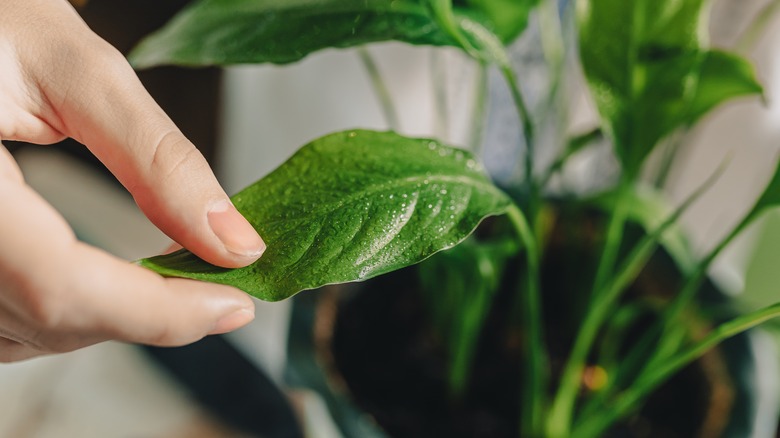When Should You Bring Your Plants Inside This Fall?
When you live in a USDA growing zone that experiences freezing temperatures during the fall and winter, it's unlikely that your container plants will survive outdoors year-round. If you don't want your favorite fern, flower, or specimen plant to die from dropping temperatures, you'll need to bring it indoors, where it can be protected from the cold air.
Taking your houseplants back indoors after the end of summer can be tricky. Unlike some may think, there is more to it than simply moving their pot from one spot to another. One small mistake in the process can be fatal for finicky houseplants. Typically, as described by Pennington, transitioning your plants from outside to inside takes about five days of work. Though that timeframe may change depending on the type of plant and how many you own. Each task is easy enough, and it should only take 15 to 120 minutes daily. The bulk of your efforts will be spent observing your plants and planning their move.
When to bring your plants inside
Tender container plantings such as rex begonia, rosemary, Boston ferns, and ginger all feature delicate foliage that shouldn't be subject to winter conditions, as mentioned by Michigan State University. Bringing them indoors will both save you from replanting in the spring and allow you to nurture a lush green window sill throughout the cooler seasons.
Depending on your area, the date you should bring your warm-weather-loving plants indoors will vary. Instead, you should plan according to the temperatures in your region. For example, in Idaho, nighttime temperatures can begin to drop below 50 degrees Fahrenheit as early as September. Still, in Oklahoma, you won't see cooler weather like that until October or November, as noted by Weather U.S. However, all tender container plantings kept outside should be brought indoors when it becomes at least as cold as 50 degrees Fahrenheit outdoors, as a general rule.
How to prepare to bring your plants inside
When fall starts approaching, you'll need to begin preparing your plants for their move inside. This is commenced by making a space indoors that can provide each of your potted flora with the conditions they need. You might consider washing your windows, investing in plant stands, replacing your lightbulbs, or buying a humidifier, as suggested by WallyGrow. Once the space is ready, the next thing to do is make sure your plants are pest-free. You may inspect them first, but small insects can be difficult to spot. Instead, many gardeners choose to simply spray down each of their plants with neem oil to kill to prevent any pests.
Before officially moving your plants indoors, the last step is to acclimate them to the new environment. The easiest way to do this is to slowly move them into a shadier outdoor location each day for about five days. As you do this, leaves may drop, but the slow transition will prevent your plants from experiencing shock and dying altogether. Once your plant has successfully acclimated to a shadier environment, you can finally move it indoors. For the first week or so, keep a careful eye on it and watch for any pests or other problems.


